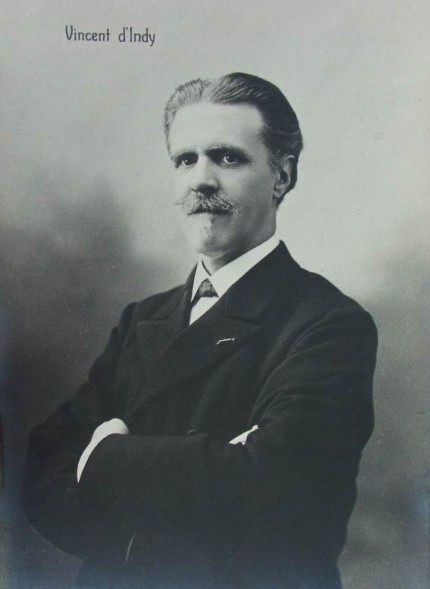Chicago Ensemble offers chamber rarities by d’Indy and Hindemith

It’s always remarkable how different concert calendars can often serendipitously align.
For instance, one can go years without hearing music of Vincent d’Indy. Two weeks ago, the Chicago Symphony Orchestra gave the first local performance of his Symphony on a French Mountain Air in 70 years.
And Tuesday night brought another rarely heard d’Indy work with his Trio in B flat major, part of a typically enterprising program presented by the Chicago Ensemble at Fourth Presbyterian Church.
D’Indy is better known today as an influential teacher than a composer in his own right. Yet his works are unerringly well crafted, charming and chockablock with melody.
Certainly, the committed performance of d’Indy’s Trio for clarinet, cello and piano made one wonder why this wonderful work is so completely neglected. The restless chromaticism of his teacher Cesar Franck is evident, yet d’Indy’s Trio has its own attractions–expansive in scale and imbued with luxuriant harmonies. The group’s new cellist Rebecca Zimmerman brought a burnished, rich tone to the music, as with the somber opening theme of the “Chant elegiaque” movement. The full tone and agility of clarinetist Elizandro Garcia-Montoya was equally impressive and, with dedicated keyboard playing by Gerald Rizzer, the performance provided supreme advocacy for this chamber rarity.
Paul Hindemith’s music may be hard to love for many, but his 1938 Quartet is among his finest chamber scores. Scored for clarinet, violin, cello and piano, Hindemith’s taut contrapuntal style is as tightly woven as ever, but the Quartet puts the lie to the contention that Hindemith’s style centers on a note-spinning grayness. Certainly, the long-limbed theme of the slow movement is as appealing as anythng in the d’Indy Trio.
At times one wanted a bit more personality in the individual playing, but, joined by violinist Mathias Tacke, the Chicago Ensemble members served up a spirited and well-played reading, pointing up the pensive introspection as much as the bustling hurly-burly, with finely shaded clarinet work by Garcia-Montoya.
The evening led off with another winner of the Chicago Ensemble’s “Discover America” Competition for chamber works. Marc Satterwhite’s Memento Mori 3: Ribbons on the Memory Wall from 1999 was written in response to a Karen Findley exhibition in memory of those who died of AIDS.
Cast in a single movement of about 23 minutes, and scored for clarinet, violin, and piano, Satterwhite’s trio is a strongly felt work, fluctuating between jagged, agitated figures and a fragile tense expression. Tacke, Garcia-Montoya and Rizzer offered an impassioned and eloquent rendering.
Posted in Performances




